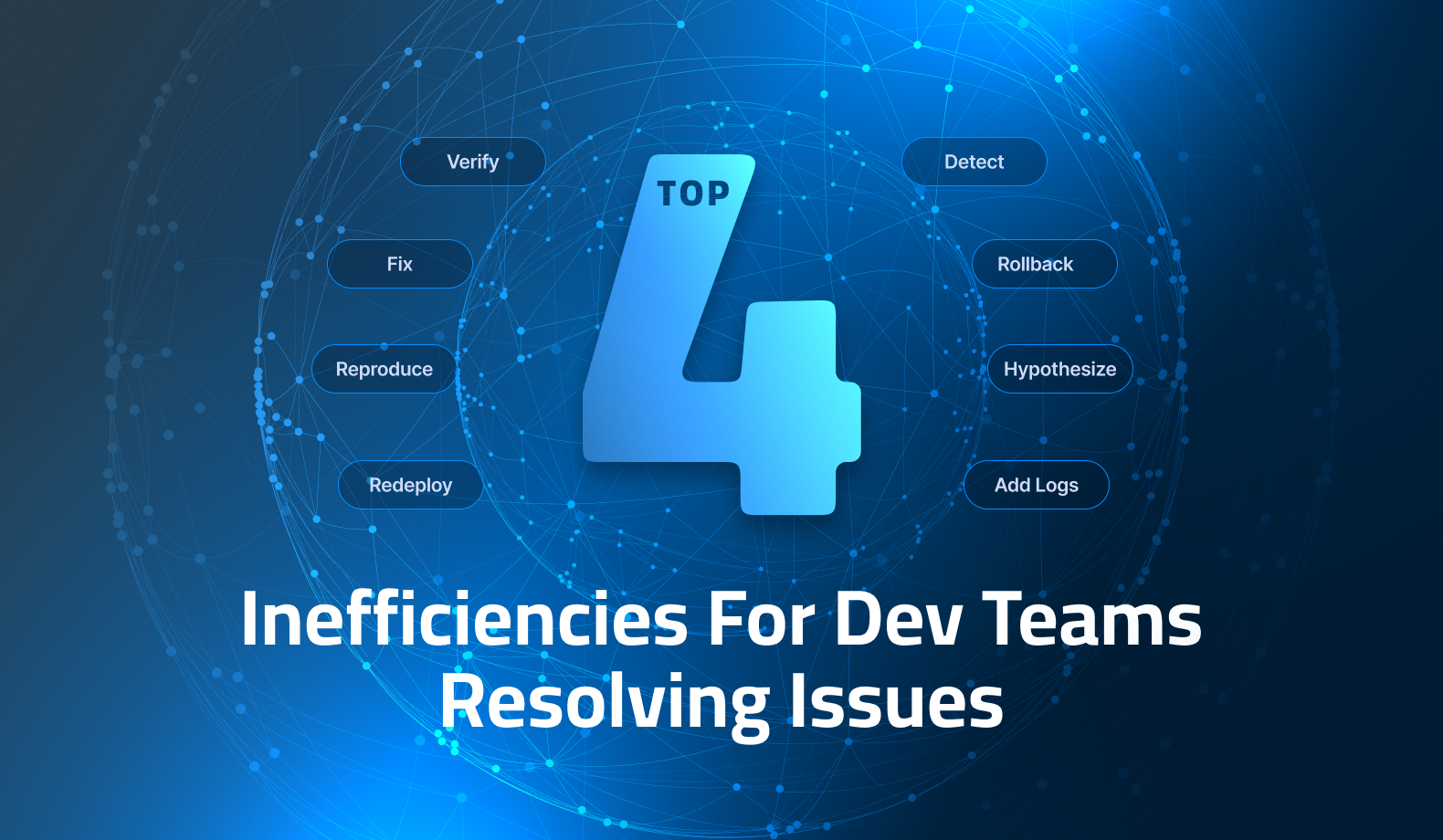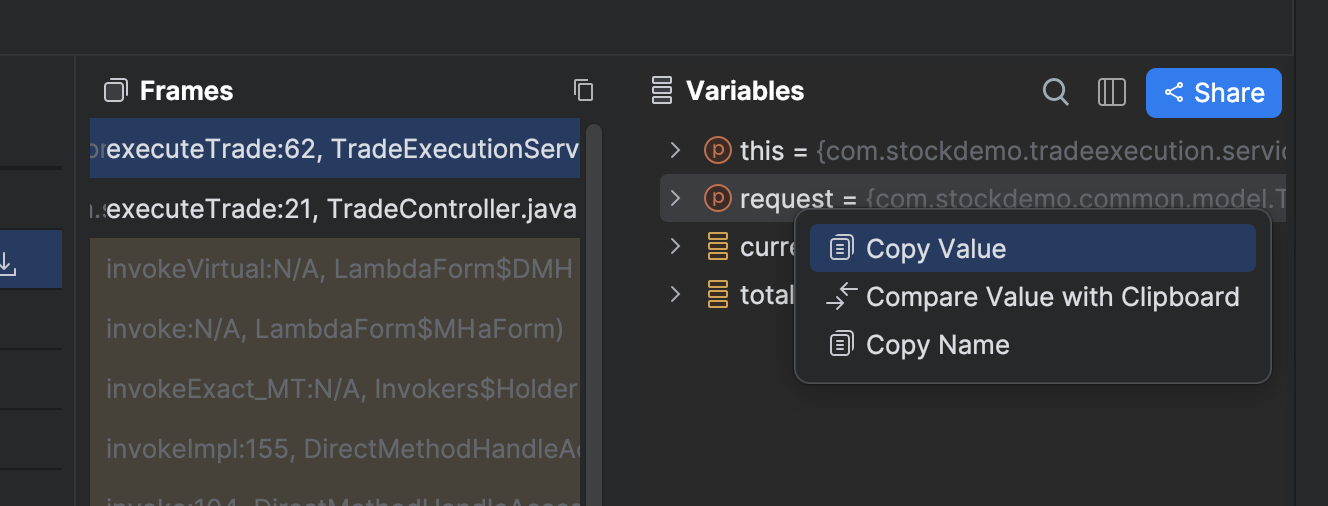

Top 4 Inefficiencies For Dev Teams Resolving Issues
Every hour developers spend troubleshooting is an hour they’re not building features, innovating, or delivering value to customers. Yet in most organizations, issue management and debugging remains one of the biggest drains on productivity and release velocity. That frustration is exactly what led our founders, themselves developers, to create Lightrun.
Research shows developers spend 25–50% of their time debugging. That means millions of dollars in lost opportunity, delayed releases, and lower developer satisfaction. And this is a concern that’s only getting magnified as generative AI gives us more code and more dependencies than ever before. Stanford’s 2025 study involving 100k developers concluded that 15-25% of the productivity gain from gen AI was lost again on rework due to bugs.
Below are the four most common inefficiencies in debugging, what they mean for your business, and how Lightrun helps fix them.
1. Issues Are Hard (or Impossible) to Reproduce Locally

The status quo
Modern large, distributed systems can’t be fully replicated on a developer’s laptop (see research by Microsoft as well as a white paper from Google). The differences in dependencies, such as use of 3rd party API calls, may make reproduction in lower environments impossible. Some bugs are also due to matters of scale, such as the number of instances of backend services running in tandem. Remote debuggers exist, of course, but successfully using them to target the right service instance can be a real challenge, and these tools bring performance risk as well as security concerns if used in user-facing environments. And let’s not forget about the elephant in the room: real-world data. Many bugs only manifest once end users bring their unexpected data and usage circumstances into the equation.
41% [of engineers] identified reproducing a bug as the biggest barrier to finding and fixing bugs faster. Undo.io report
The impact
The time to resolve an issue (MTTR) goes up and up when the root cause of that issue isn’t easy to identify. Which means that teams managing services run the risk of violating service level agreements with customers (SLAs) or internal objectives (SLOs), angering customers and doing reputational harm. Internally, the situation leads to frustrated teams and lower morale because, let’s face it, engineers don’t enjoy spending time in war rooms.
2. Redeployments are Slow and Inefficient

The status quo
Debugging often means adding logs, redeploying, testing, and repeating. Each of these cycles is slow, and developers lose even more time context-shifting while waiting for new deployments. In some organizations, to even initiate these cycles, developers often need approved change requests and Ops/SRE team involvement to redeploy builds with added logging. Multiple teams are thus pulled into incident response, slowing resolution.
31% of the time, developers have to ask for more logs from the reporter. IEEE Study
The impact
Naturally, incident response time suffers due to these cycles, prolonging service interruptions. Not to mention lost developer time and delayed feature releases because developers are focused elsewhere. Developer morale can plummet as their time is further wasted waiting for access to logs from environments they can’t interact with directly. Operational costs go up as teams spend hours on repetitive work.
3. Too Much Telemetry Complicates RCA

The status quo
Due to the inefficiencies already mentioned above and to avoid missing root causes, teams often over-log their applications to try and game the system around the pain of redeployment. As a result, the logs that Ops/SREs are forced to contend with can wind up being incredibly noisy, creating a needle-in-a-haystack problem when searching for the root cause of a specific problem. This is such a well-known problem that there’s even a CWE for it, as well as published guidance from Google, Microsoft, and Amazon to try and avoid this anti-pattern.
The impact
Engineers waste time searching through irrelevant data. Again, incident response time suffers. Not to mention that this glut of logging can cause storage & retention costs to skyrocket.
4. Troubleshooting Unfamiliar Code Is Hard

The status quo
Developers are often faced with troubleshooting issues in code they didn’t write. The classic flavor of this was due to code written by people no longer on the team. These days everyone is facing it because so much of the code was written by AI. Which means devs spend hours building context before they can even start debugging.
…if you didn’t write the code, and you didn’t struggle with the code, you simply aren’t going to be able to just sit down in front of that code and ‘get it’ immediately. I don’t care how smart you are. It’s not about ‘smart.’ It’s about being in the trenches during the original battle. Joe Procoprio writing for Inc
The impact
This particularly inefficiency can lead to longer onboarding cycles for new developers. They might not be trusted to handle high priority issues due to lack of context, which means senior developers are assigned instead and now your best peoples’ time is getting soaked up by troubleshooting. Do we even need to mention the negative impact on incident response time again? There’s also increased risk of repeat incidents due to incomplete fixes.
How Lightrun Addresses these Problems
Lightrun enables safe, live debugging in any environment, including production. With patented Sandbox technology and flexible data redaction, developers can observe exactly what’s happening without impacting performance or security.
With Lightrun, developers can insert dynamic logs or snapshots (virtual, non-breaking breakpoints) directly into running applications, with no redeploy required. This reduces MTTR by up to 90% and accelerates time-to-resolution.
Lightrun lets developers self-serve this instrumentation directly from their IDE. This reduces dependency on Ops/SRE, shortens resolution cycles, and frees every team to focus on higher-value work.
Lightrun’s AI-powered Autonomous Debugger helps developers quickly orient themselves with root cause analysis assistance and guided instrumentation suggestions. This shortens onboarding time for new devs, accelerates troubleshooting, and improves long-term team resilience.
Conclusion
Debugging inefficiencies are more than engineering headaches—they’re direct drains on velocity, costs, and developer retention.
With Lightrun, organizations achieve:
- Up to 90% faster MTTR
- Hundreds of thousands in annual incident savings (PPG saved $322K)
- Lower observability costs through optimized logging
- Faster onboarding and happier developers
For engineering leaders, that means shipping more features, achieving your quarterly goals, and giving developers time to focus on innovation.
Ready to turn debugging from a headache to a delivery enabler? Book a demo today.
It’s Really not that Complicated.
You can actually understand what’s going on inside your live applications.










